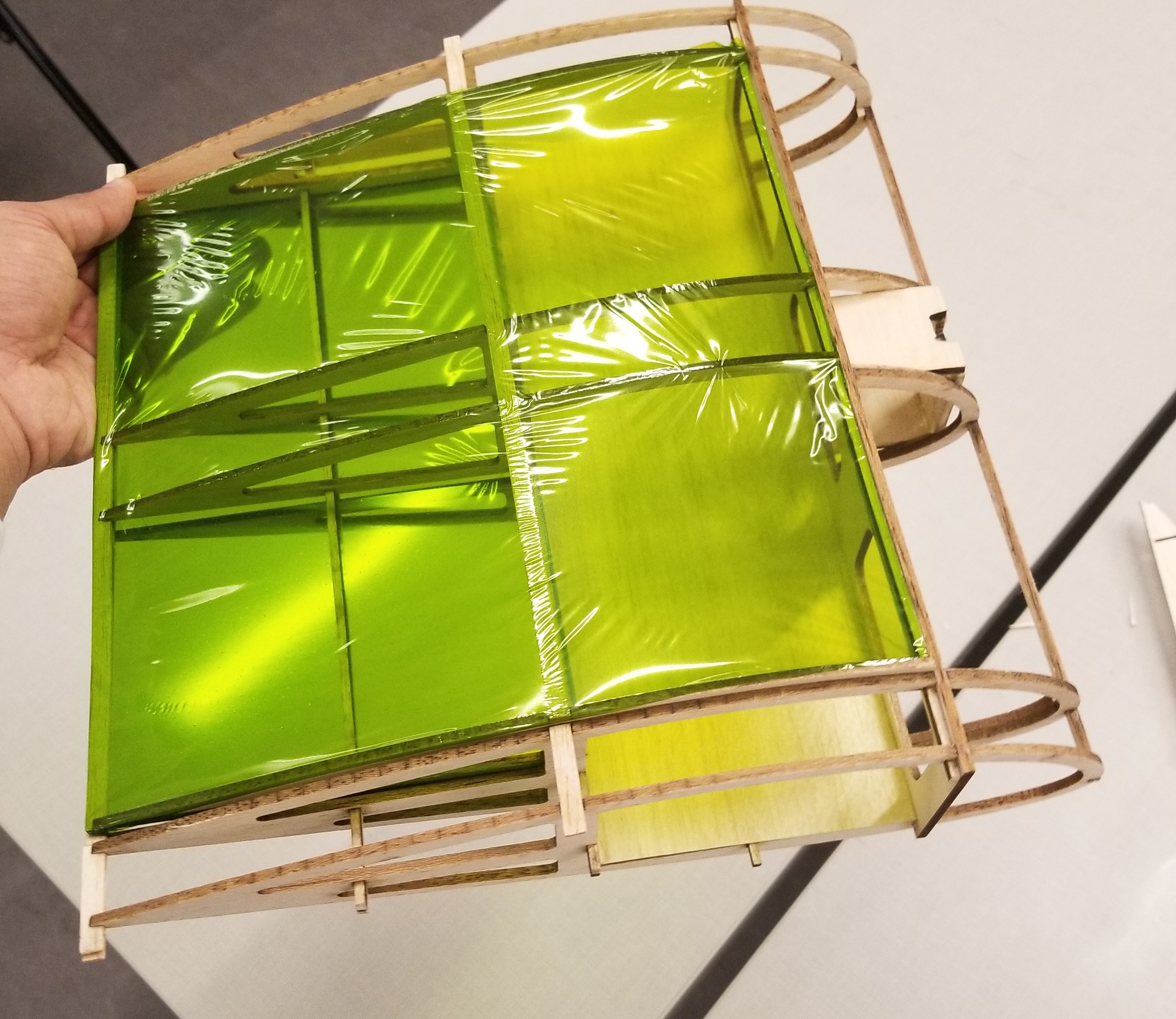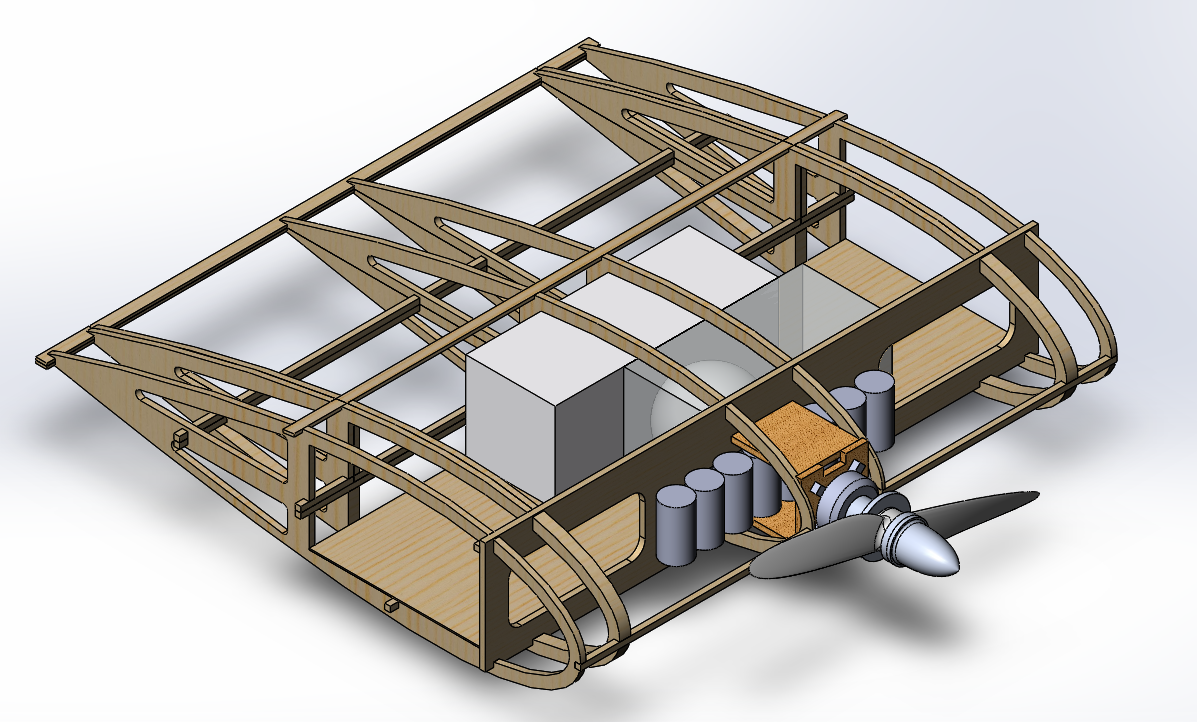For the 2017-2018 AIAA DBF competition, our team produced a low-mass tandem wing aircraft. To minimize drag on the aircraft, I worked with Joshua Richman to design and build a lifting-body fuselage.
I chose the NACA 2424 airfoil to reduce induced drag during cruise because of its symmetry, but to produce lift on takeoff with a positive angle of attack. Structurally, this was difficult because the anisotropy of wood meant with thin curved sections of the airfoil, cracks could easily form. To solve this, load sharing stiffeners were placed along the airfoil in weaker areas.
![]()
The design was challenging as the fuselage had to accomodate an asymmetric payload, distribute the thrust load from the propulsion system, and allow the payload to be quickly accessed. By designing a strong hatch and central structure, we allowed the payload to be easily accessed as required by the competition rules.
To learn more, here is a copy of my technical report.
![]()
![]()
![]()
I chose the NACA 2424 airfoil to reduce induced drag during cruise because of its symmetry, but to produce lift on takeoff with a positive angle of attack. Structurally, this was difficult because the anisotropy of wood meant with thin curved sections of the airfoil, cracks could easily form. To solve this, load sharing stiffeners were placed along the airfoil in weaker areas.

The design was challenging as the fuselage had to accomodate an asymmetric payload, distribute the thrust load from the propulsion system, and allow the payload to be quickly accessed. By designing a strong hatch and central structure, we allowed the payload to be easily accessed as required by the competition rules.
To learn more, here is a copy of my technical report.



To comply with ITAR regulations and NDAs, all Astranis, Blue Origin, Northrop Grumman and SpaceX pictures shown are available publicly online